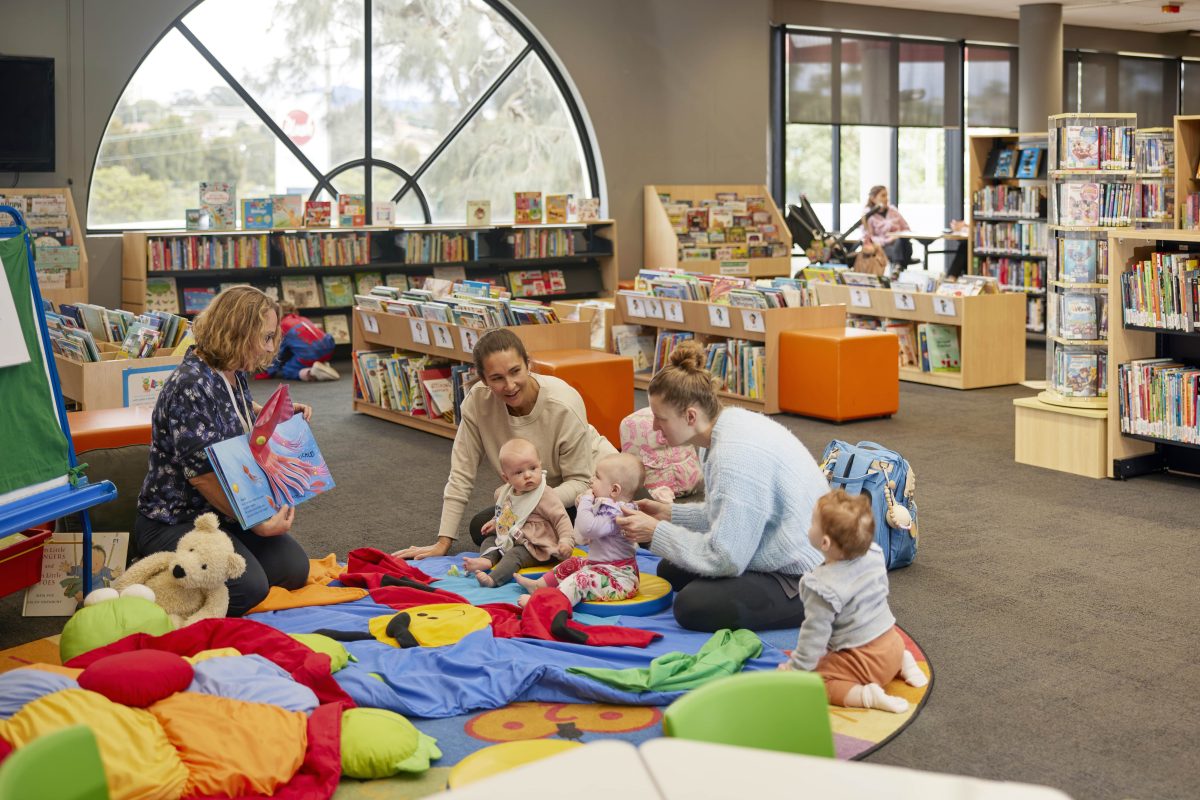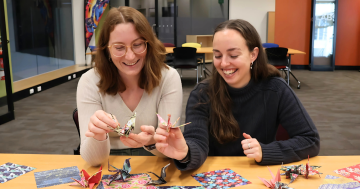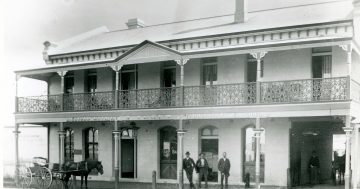
Programs and community connection are now key parts of the purpose of local libraries. Photos: Wollongong City Council.
Libraries around Wollongong now boast a lot more than just borrowing books, and an ambitious plan by the city council aims to bring people back to the once-popular spaces by focusing on providing more relevant collections and attracting new community groups.
Wollongong City Council is seeking public feedback on its Library Strategy for 2024 to 2028, which outlines its goals to increase the popularity of the community hubs, including increasing membership by 5 per cent every year.
But Wollongong City Libraries’ acting coordinator service quality and development Lindsay Carapella said the way to achieve this would be ever-evolving.
“This strategy takes us over the next five years and really, the ‘how’ will change, and we hope it changes as we respond to community needs and what our service looks like now we hope is improved and diversified over those years.”
The strategy also includes an annual 5 per cent increase in visitation, physical loans and digital loans, as well as a 3 per cent increase per year in website traffic and app usage.
This could also include a shift in what is on offer, with another goal to acquire 85 per cent of customer-recommended titles.
“We’re really looking at, from a collections point of view, making sure that our collection is built through a customer lens and is customer-driven,” Ms Carapella said.
“We want to make sure that our material that is on offer is relevant, appealing and appropriate, that it’s enticing for people to come and it really is exactly what people wanted to borrow or read or watch or listen to.”
Last financial year, our libraries loaned out 997,178 physical items and 316,924 digital, with 40 per cent of the population of the Wollongong LGA, or 87,889 people, active library members.

Collections will become more customer-driven to make sure they’re appealing to visitors.
But the focus is now on much more than books, with 51,894 people attending the libraries’ 2784 programs.
“Gone are the days, at least for us, of the shushing librarian,” Ms Carapella said. “Although all of our libraries do have lovely quiet spaces for you to study and read and have privacy and things like that, but really it’s not just about the books.
“We’re also really making sure that our spaces and our places are comfortable, and certainly we are a library and we are about literacy and books but we’re so much more than that and we encourage the community to visit our spaces to take some refuge from maybe some of the crazy weather that we have, or to come and read a newspaper or to join a club.”
The team plans on expanding on this by continuing popular youth and toddler programs, as well as engaging with other community groups such as First Nations, CALD, LGBTQIA+ and people with a disability.
“We’re really looking at developing our community partnerships, so to help facilitate community groups across the LGA to either come and use the space and run their program or have their meeting, and to co-design and co-deliver programs with community groups, we’re really looking to increase that over the next five years,” Ms Carapella said.
This plan hoped to put the library on the trajectory it was on pre-pandemic, when about 800,000 people visited the physical space, and create a fresh start after years of disruption.
But they need people to make it happen.
Currently with 124 staff and 65 volunteers, Wollongong City libraries hope to attract even more members of the public to support the programs and people in the community who use the service, aiming for an annual 3 per cent increase in volunteers.
And although another goal is to increase the total number of contributed hours by volunteers, Ms Carapella said there was a lot of flexibility for those dedicating their time and opportunities to explore their areas of interest.
“Say, for example, if you’re facilitating a program, a lot of our programs last an hour once a week or month, and so it could be as short a commitment as that, or alternatively we do have some volunteers that come in and assist with what we call Tech Savvy classes and that might go for three hours once a week.”
The strategy is on exhibition until 12 December, with community members urged to have their say through the Our Wollongong website.
“It’s extremely important that we get feedback from the community to understand where we’ve hit the mark, that they can see themselves and their families participating and engaging in the service,” Ms Carapella said. “But also on the flip side of it, the feedback where people are taking a critical eye and they’re making suggestions and providing their thoughts on how they’d like our service to be delivered in the future is just as invaluable.”


















